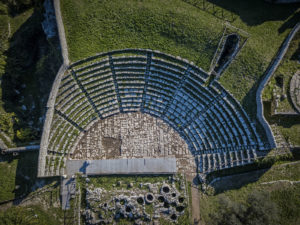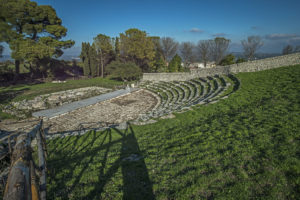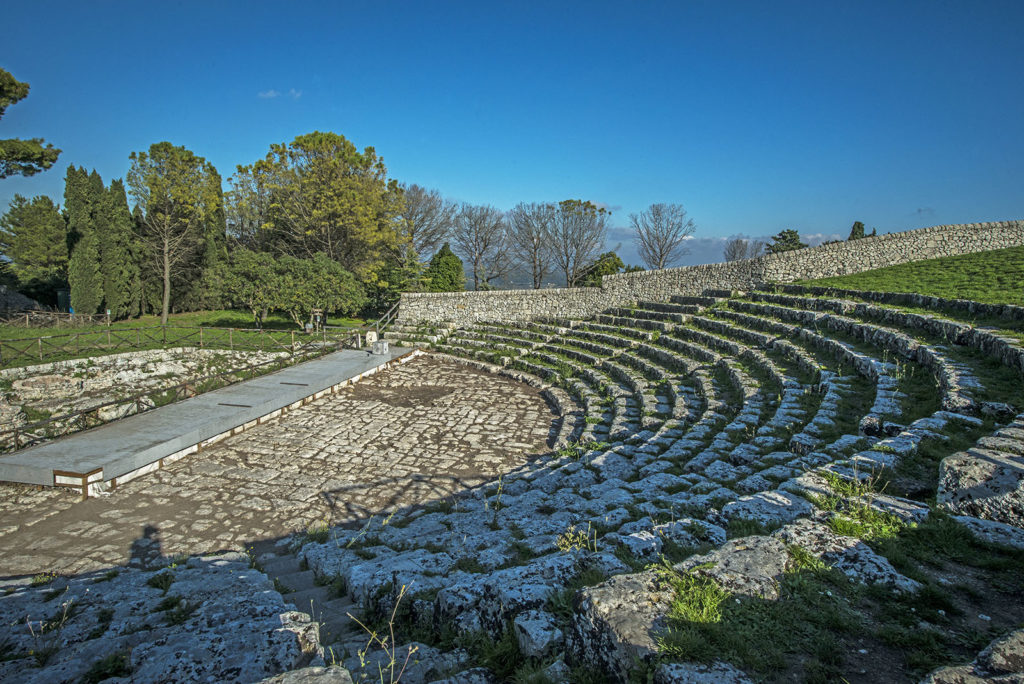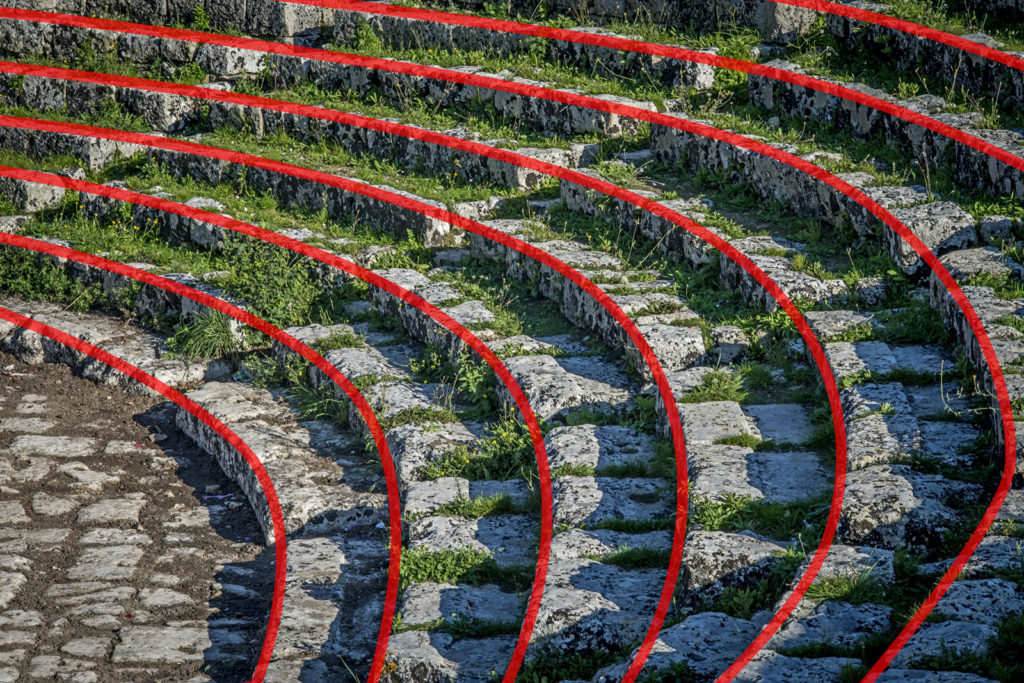Located at the entrance to the archaeological site, beyond a small gateway is the Greek Theatre of Akrai. It is small and can accommodate around 600 spectators.


It is not carved into the rock, but lies on the natural slope that was previously prepared with dry stone. Its
càvea
is composed of 9
voussoirs
and 12 steps, which, according to the rules of classic antiquity, are facing north. The space where the choir moved during theatrical performances, called the orchestra, is semi-circular in shape.
It is a unique element because other Greek theatres have a circular orchestra.
 It was modified in the Roman-Imperial age. A new and wider raised scene was built, reducing the space of the orchestra, which is still intact today.
It was modified in the Roman-Imperial age. A new and wider raised scene was built, reducing the space of the orchestra, which is still intact today.
Like other structures of this type, it has excellent natural acoustics and is still used today for classical performances in the summer months.
One of the main activities organised by the Istituto Nazionale del Dramma Antico (National Institute of Ancient Drama) is an international initiative where young people become the festival’s true protagonists by staging works by ancient tragedians and playwrights.

